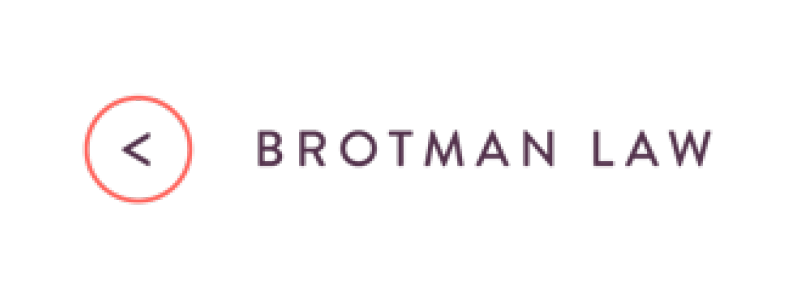
Close
- Services
- Income Tax Audits
- California Sales Tax Audits
- California Payroll Tax Audits
- IRS Tax Debt Resolution
- California Tax Debt Resolution
- Employee Retention Tax Credit Audits
- Criminal Tax
- Multi-State Tax Issues
- International Tax Issues
- Tax Optimization
- Divorce & Taxes
- Business, Real Estate, & Transactional Tax
- About
- Flat Fee Pricing
- Resources
- Contact
- Services
- Income Tax Audits
- California Sales Tax Audits
- California Payroll Tax Audits
- IRS Tax Debt Resolution
- California Tax Debt Resolution
- Employee Retention Tax Credit Audits
- Criminal Tax
- Multi-State Tax Issues
- International Tax Issues
- Tax Optimization
- Divorce & Taxes
- Business, Real Estate, & Transactional Tax
- About
- Flat Fee Pricing
- Resources
- Contact
Chapter 13 Bankruptcy
Chapter 13 bankruptcy is an option for individual debt adjustment under the U.S. Bankruptcy Code. Chapter 13 is a wage earner’s plan, which “enables individuals with regular income to develop a plan to repay all or part of their debts” (USCourts.gov, “Bankruptcy Basics PDF, p. 22,” 8/15/2013). Under chapter 13, the debtor proposes a repayment plan which allows for installments to be paid to creditors. When the debtor’s currently monthly income is less than the applicable state median, the plan will be for three years; however, the court reserves the right to approve a longer period. When the debtor’s current monthly income is greater than the applicable state median, the plan must be for five years. In this context, the plan cannot include payments that exceed five years. During the repayment period, “the law forbids creditors from starting or continuing collection efforts” (p. 22).
The greatest advantage of choosing chapter 13 over the other options is that with chapter 7, debtors can save their homes from foreclosure (p. 22). “By filing under this chapter, individuals can stop foreclosure proceedings and may cure delinquent mortgage payments over time” (p. 22). Although chapter 13 stops foreclosure proceedings, debtors will still be required to “make all mortgage payments that come due during the chapter 13 plan on time” (p. 22).
Filing chapter 13 offers another advantage. This option allows debtors to reschedule secured debts (other than a mortgage of a primary residence) and extend the debts over the life of the plan. Extending the debt repayment period helps to lower the payments. The chapter 13 provision may also protect co-signers.
Lastly, chapter 13 acts similarly to a consolidation loan whereby the debtor makes the plan payments to the chapter 13 trustee. Individuals have no direct contact with their creditors.
An individual who may be self-employed or operating an unincorporated business is eligible to file for chapter 13 relief, provided secured debts do not exceed $360,475 and unsecured debts do not exceed $1,081,400. Amounts are adjusted periodically to reflect changes in the consumer price index (p. 22).
Individuals cannot file a chapter 13 bankruptcy if a bankruptcy petition was dismissed during the preceding 180 days and if the petition was dismissed as a result of the debtor’s willful failure to appear before the court and/or comply with orders. Debtors under chapter 13 must attend credit counseling and a debt management plan created during counseling must be filed with the court. Similar to a chapter 7 debtor, the chapter 13 debtor must also file a statement of financial affairs, evidence of income, list of property, list of creditors, and a list of monthly living expenses.
Filing a chapter 13 petition automatically stays collection efforts. Between 21 and 50 days the chapter 13 bankruptcy trustee will hold a meeting of the creditors. The debtor must attend the meeting and prepare to answer any questions related to owed debts as well as related to financial affairs. The debtor must file a repayment plan within 14 days of filing the petition and provide payments of fixed amounts to the trustee on a regular basis. Funds are then disbursed to each creditor according to the plan.
Funds are distributed by priority of claims. For example, there are three types of claims: priority, secured, and unsecured. A priority claim is granted special status by bankruptcy law; status is specific to taxes and the costs of bankruptcy. Secured claims are specific to the creditors’ right to take back property if the debtor fails to pay the underlying debt.
Lastly, unsecured claims are defined as those where the “creditor has no special rights to collect against particular property owned by the debtor” (p. 25). The repayment plan must allow for the fully repayment of all debts that fall under the priority claim. With regard to the treatment of secured claims, the debtor should consult an attorney (p. 25). “The plan need not pay unsecured claims in full as long as it provides that the debtor will pay all projected ‘disposable income’ over an ‘applicable commitment period’ and as long as unsecured creditors receive at least as much under the plan as they would receive if the debtor’s assets were liquidated under chapter 7” (p. 25).
The chapter 13 debtor is entitled to a discharge of debts under the plan once all payments are completed. The discharge releases the debtor from all debts referenced in the plan.
"Sam is a wonderful, results-oriented and extremely knowledgeable and talented attorney, who really has 'heart' in working on behalf of his clients, and explains options in a straightforward, respectful manner. He has assisted us with great outcomes which have added to our quality of life. I would not hesitate to recommend Sam for his services as he is an ethical, personable and expert attorney in his field. You will likely not be disappointed with Sam's work ethic, approach and his efforts."
-Aileen Dwight, Licensed Clinical Social Worker & Psychotherapist
Last updated: July 22, 2024

BECOME AN INSIDER
Our best stuff: secrets, tax saving tools, and tax defense strategies from the braintrust at Brotman Law.
- Expanded benefits during your first consultation with the firm.
- Priority appointment scheduling and appointment times.
- Complementary access to our firm’s concierge services.
- Receive updates and “insider only” tax strategies and tactics.
- And many more benefits.
Not Sure Where to Start?
Start Here
These ten big ideas will change the way you think about your taxes and your business.
Learn About Your Situation
Find the articles and videos you need to make the right tax decisions in the learning center.
Explore Our Services
It is not just about what we do, but who we are, why we do it, and how that benefits you.
Get Your Game Plan
Meet with us to outline your strategy. No further obligation, 100% money-back guarantee.
Related Articles

Bankruptcy and Automatic Stay
According to United States bankruptcy law, an automatic stay is defined as an automatic injunction,...
4 min read

Establishing Residency or Domicile in California Can Be Taxing
Robert Wood, tax expert and frequent contributor to Forbes.com, wrote that “many would-be former...
12 min read

Can Internal Revenue Code Section 1202 Benefit You?
There is a generous tax benefit that only select taxpayers qualify for. Not well known, it is...
12 min read
Brotman Team
Free 15 Minute Consultation
- 15 mins
We'll answer your most pressing tax law questions in 15 minutes. Please choose a time below that works best for you.
IRS Circular 230 Disclosure: To ensure compliance with requirements imposed by the IRS, I must inform you that any U.S. federal tax advice contained in this website is not intended or written to be used, and cannot be used, for the purpose of (i) avoiding penalties under the Internal Revenue Code or (ii) promoting, marketing or recommending to another party any transaction or matter contained in this website.



COMMENTS